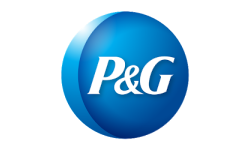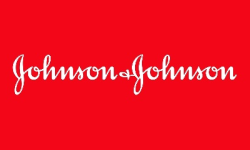
Global Aroma Chemicals Market by Chemical (Musk Chemicals, Benzenoids, Terpenes & Terpenoids), by Application (Fragrances, Flavors), by Source (Natural, Synthetic) and Region (North America, Latin America, Europe, Asia Pacific and Middle East & Africa), Forecast To 2028
Summary of the Report
Global aroma chemicals market was valued at USD 5.5 billion in 2019. It is projected to grow at a compound annual rate (CAGR of 5.8%) between 2020 and 2027. The market is expected to grow due to growing demand from both the food and beverage industries as well as fragrance. The market is expected to grow because of increased urbanization and consumer spending. Along with taste inedible products, the aroma plays a significant role in enhancing the flavor of processed foods and beverages. Natural aroma chemicals are growing due to increased demand for healthy and wellness foods and regulations banning the use of synthetic flavor. The market is driven by the suitability of natural flavor in wider applications, the additional health benefits of some natural flavors, as well as advanced technological innovations.
Pine trees, and petrochemicals are the basic raw materials for aroma chemicals. To maintain quality, key players in the market are often integrated throughout the value chain (from manufacturing to distribution). This allows key players to gain a competitive edge in terms of cost benefits and a higher profit margin.
Key players spend significant amounts on R&D to study improved processes and increase manufacturing costs in the fragrance industry. Market growth will be impeded by rising R&D costs.
Source Insights
In 2019, synthetic aroma chemicals made up 73.9% of the total revenue and will continue to do so over the forecast period. Synthetic aromas are seeing increased demand from the personal care and cosmetics industries, as well as the food and beverage industry. Because synthetic aroma chemicals can be stronger than natural chemicals, personal care formulators and cosmetics manufacturers still prefer them over artificial chemicals. Cosmetics manufacturers now have to rely on synthetic ingredients due to increased skin sensitivity and allergies.
Consumers consider natural aroma chemicals to be more sustainable, therapeutic, and greener. Natural aroma products are expected to increase in demand on a global scale as they raise awareness about healthy and sustainable living. However, the lack of raw materials and the high price of producing natural aroma chemicals will limit their growth over the forecast period.
Application Insights
In 2019, fragrance accounted for almost 69.0% of the revenue and is expected to continue its lead in the future. Because synthetic flavors are cheaper than natural flavorings, they are a major driver for flavor manufacturers. It is believed that the flavor market has great potential in emerging countries. The major drivers of the flavor market include growing disposable income, rising demand for beverages, processed foods, increased demand for exotic flavors, and increasing demand for different food applications.
Market growth is expected to be boosted by the growing popularity of authentic aromas within the food and hospitality industries in the next few years. Market growth is expected to be aided by rising demand for natural products that can be used in personal care. Product demand is expected to rise due to increasing public awareness about hygiene and health, as well as a growing preference to natural and organic ingredients.
Animal feed industries are awash in aroma chemicals. Animal feed products are often made with vanillin and cinnamaldehyde. Carvacrol and Thymol are also used in animal feed mixes due to their flavoring capabilities.
Chemical Insights
Terpenes & Terpenoids were the most prominent chemical segment, accounting for over 30% of all chemicals in 2019. Terpenes & Terpenoids have effective medical properties such as antiseptic, anticarcinogen, and antibiotic properties. The segment's growth is expected to be driven by the continued use of terpene in pharmaceutical and nutraceutical application.
Musk chemicals can be extracted both naturally and synthetically. Natural musk can be extracted from animals and plants. This includes roots, seeds, rump glands of musk deer, and muskrat cats. There are many uses for musk chemicals, including soap, detergent, cosmetics, personal care and food.
The market's top trends include the rising number of professionals and the growing middle class, as well as raising awareness. Over the forecast period, the rising popularity of fine fragrances and personal care products will drive demand for musk chemical. The forecast period will see new product innovations and increased popularity of cosmetic and perfume items, which are expected to increase the demand for musk chemical.
Regional Insights
Asia Pacific was the largest regional market in aroma chemicals, with a revenue share 29.6% in 2019. It is expected to continue dominating the market during the forecast period. In the near future, countries such as Japan, India, China and China are expected to experience positive growth. Aroma chemicals are also being sought out by developing countries like Japan, India, China and China because of their increased demand for flavor and fragrances. Different countries have different tastes and the market for flavors is different.
Asian fragrances and flavors are also becoming more popular in major regions like North America and Europe. China, India and Indonesia are some of the most prominent Asian food flavor markets. Many manufacturing companies are investing in R&D facilities in order to expand their businesses in the Asia Pacific region.
India is the Asia Pacific's largest emerging economy. India is expected to see a rise in demand for aroma chemicals due to the rising demand from manufacturers for soap, detergents, and other home care products. India's high consumer spending power is another reason for the market's growth.
Due to the growth in the food processing and consumer goods industries, the North American market is expected to remain stable. Trends, which favor mergers in the end use industries, predict that developed countries will grow. Market growth in developed countries is slower than that of the developing countries.
Due to the growth in the personal care and cosmetics markets, the U.S. accounted for the largest portion of the North American market's revenue in 2019. The country's disposable income is expected to increase, which will fuel the demand of cosmetics, personal-care products, food, and beverages. This will also trigger the need for aroma chemicals.
However, the U.S. government has some rigid regulations that can limit the market's growth over the forecast period. These include the consideration of contamination from aroma chemicals being produced.
Market Share Insights & Key Companies
The industry's most prominent manufacturers are well-established and have large production capabilities. These players are now focusing on expansion and acquisition strategies in order to increase their product range and meet growing end-use market demand. Global market opportunities are opening up to new market players. Multinationals are a formidable competition for companies looking to establish themselves on the global market. The benefits of products are becoming increasingly important to consumers, so producers have been forced to create high-quality, affordable, and sustainable products. These players are also involved in the supply chain, raw material sourcing and distribution of finished products. The following are some of the most prominent players in aroma chemicals market:
-
BASF SE
-
Bell Flavors & Fragrances
-
Givaudan
-
Kao Corporation
-
Symrise
-
Takasago International Corporation
Up Market Research published a new report titled “Aroma Chemicals Market research report which is segmented by Chemical (Musk Chemicals, Benzenoids, Terpenes & Terpenoids), by Application (Fragrances, Flavors), by Source (Natural, Synthetic), By Players/Companies Symrise, Takasago International Corporation, Kao Corporation, Givaudan, Bell Flavors & Fragrances, BASF SE”. As per the study the market is expected to grow at a CAGR of XX% in the forecast period.
Report Scope
| Report Attributes | Report Details |
| Report Title | Aroma Chemicals Market Research Report |
| By Chemical | Musk Chemicals, Benzenoids, Terpenes & Terpenoids |
| By Application | Fragrances, Flavors |
| By Source | Natural, Synthetic |
| By Companies | Symrise, Takasago International Corporation, Kao Corporation, Givaudan, Bell Flavors & Fragrances, BASF SE |
| Regions Covered | North America, Europe, APAC, Latin America, MEA |
| Base Year | 2020 |
| Historical Year | 2018 to 2019 (Data from 2010 can be provided as per availability) |
| Forecast Year | 2028 |
| Number of Pages | 201 |
| Number of Tables & Figures | 141 |
| Customization Available | Yes, the report can be customized as per your need. |
The report covers comprehensive data on emerging trends, market drivers, growth opportunities, and restraints that can change the market dynamics of the industry. It provides an in-depth analysis of the market segments which include products, applications, and competitor analysis.

Global Aroma Chemicals Market Report Segments:
The market is segmented by Chemical (Musk Chemicals, Benzenoids, Terpenes & Terpenoids), by Application (Fragrances, Flavors), by Source (Natural, Synthetic).
Aroma Chemicals Market research report delivers a close watch on leading competitors with strategic analysis, micro and macro market trend and scenarios, pricing analysis and a holistic overview of the market situations in the forecast period. It is a professional and a detailed report focusing on primary and secondary drivers, market share, leading segments and geographical analysis. Further, key players, major collaborations, merger & acquisitions along with trending innovation and business policies are reviewed in the report.
Key Benefits for Industry Participants & Stakeholders:
- Industry drivers, restraints, and opportunities covered in the study
- Neutral perspective on the market performance
- Recent industry trends and developments
- Competitive landscape & strategies of key players
- Potential & niche segments and regions exhibiting promising growth covered
- Historical, current, and projected market size, in terms of value
- In-depth analysis of the Aroma Chemicals Market
Overview of the regional outlook of the Aroma Chemicals Market:
Based on region, the market is segmented into North America, Europe, Asia Pacific, Latin America and Middle East & Africa (MEA). North America region is further bifurcated into countries such as U.S., and Canada. The Europe region is further categorized into U.K., France, Germany, Italy, Spain, Russia, and Rest of Europe. Asia Pacific is further segmented into China, Japan, South Korea, India, Australia, South East Asia, and Rest of Asia Pacific. Latin America region is further segmented into Brazil, Mexico, and Rest of Latin America, and the MEA region is further divided into GCC, Turkey, South Africa, and Rest of MEA.

Highlights of The Aroma Chemicals Market Report:
- The market structure and projections for the coming years.
- Drivers, restraints, opportunities, and current trends of Aroma Chemicals Market.
- Historical data and forecast.
- Estimations for the forecast period 2028.
- Developments and trends in the market.
1. Musk Chemicals
2. Benzenoids
3. Terpenes & Terpenoids
7. By Application:1. Fragrances
2. Flavors
8. By Source:1. Natural
2. Synthetic
- Market scenario by region, sub-region, and country.
- Market share of the market players, company profiles, product specifications, SWOT analysis, and competitive landscape.
- Analysis regarding upstream raw materials, downstream demand, and current market dynamics.
- Government Policies, Macro & Micro economic factors are also included in the report.
We have studied the Aroma Chemicals Market in 360 degrees via. both primary & secondary research methodologies. This helped us in building an understanding of the current market dynamics, supply-demand gap, pricing trends, product preferences, consumer patterns & so on. The findings were further validated through primary research with industry experts & opinion leaders across countries. The data is further compiled & validated through various market estimation & data validation methodologies. Further, we also have our in-house data forecasting model to predict market growth up to 2028.
How you may use our products:
- Correctly Positioning New Products
- Market Entry Strategies
- Business Expansion Strategies
- Consumer Insights
- Understanding Competition Scenario
- Product & Brand Management
- Channel & Customer Management
- Identifying Appropriate Advertising Appeals

Reasons to Purchase the Aroma Chemicals Market Report:
- The report includes a plethora of information such as market dynamics scenario and opportunities during the forecast period
- Segments and sub-segments include quantitative, qualitative, value (USD Million,) and volume (Units Million) data.
- Regional, sub-regional, and country level data includes the demand and supply forces along with their influence on the market.
- The competitive landscape comprises share of key players, new developments, and strategies in the last three years.
- Comprehensive companies offering products, relevant financial information, recent developments, SWOT analysis, and strategies by these players.
Chapter 2 Assumptions and Acronyms Used
Chapter 3 Research Methodology
Chapter 4 Aroma Chemicals Market Overview
4.1 Introduction
4.1.1 Market Taxonomy
4.1.2 Market Definition
4.1.3 Macro-Economic Factors Impacting the Market Growth
4.2 Aroma Chemicals Market Dynamics
4.2.1 Market Drivers
4.2.2 Market Restraints
4.2.3 Market Opportunity
4.3 Aroma Chemicals Market - Supply Chain Analysis
4.3.1 List of Key Suppliers
4.3.2 List of Key Distributors
4.3.3 List of Key Consumers
4.4 Key Forces Shaping the Aroma Chemicals Market
4.4.1 Bargaining Power of Suppliers
4.4.2 Bargaining Power of Buyers
4.4.3 Threat of Substitution
4.4.4 Threat of New Entrants
4.4.5 Competitive Rivalry
4.5 Global Aroma Chemicals Market Size & Forecast, 2018-2028
4.5.1 Aroma Chemicals Market Size and Y-o-Y Growth
4.5.2 Aroma Chemicals Market Absolute $ Opportunity
Chapter 5 Global Aroma Chemicals Market Analysis and Forecast by Chemical
5.1 Introduction
5.1.1 Key Market Trends & Growth Opportunities by Chemical
5.1.2 Basis Point Share (BPS) Analysis by Chemical
5.1.3 Absolute $ Opportunity Assessment by Chemical
5.2 Aroma Chemicals Market Size Forecast by Chemical
5.2.1 Musk Chemicals
5.2.2 Benzenoids
5.2.3 Terpenes & Terpenoids
5.3 Market Attractiveness Analysis by Chemical
Chapter 6 Global Aroma Chemicals Market Analysis and Forecast by Application
6.1 Introduction
6.1.1 Key Market Trends & Growth Opportunities by Application
6.1.2 Basis Point Share (BPS) Analysis by Application
6.1.3 Absolute $ Opportunity Assessment by Application
6.2 Aroma Chemicals Market Size Forecast by Application
6.2.1 Fragrances
6.2.2 Flavors
6.3 Market Attractiveness Analysis by Application
Chapter 7 Global Aroma Chemicals Market Analysis and Forecast by Source
7.1 Introduction
7.1.1 Key Market Trends & Growth Opportunities by Source
7.1.2 Basis Point Share (BPS) Analysis by Source
7.1.3 Absolute $ Opportunity Assessment by Source
7.2 Aroma Chemicals Market Size Forecast by Source
7.2.1 Natural
7.2.2 Synthetic
7.3 Market Attractiveness Analysis by Source
Chapter 8 Global Aroma Chemicals Market Analysis and Forecast by Region
8.1 Introduction
8.1.1 Key Market Trends & Growth Opportunities by Region
8.1.2 Basis Point Share (BPS) Analysis by Region
8.1.3 Absolute $ Opportunity Assessment by Region
8.2 Aroma Chemicals Market Size Forecast by Region
8.2.1 North America
8.2.2 Europe
8.2.3 Asia Pacific
8.2.4 Latin America
8.2.5 Middle East & Africa (MEA)
8.3 Market Attractiveness Analysis by Region
Chapter 9 Coronavirus Disease (COVID-19) Impact
9.1 Introduction
9.2 Current & Future Impact Analysis
9.3 Economic Impact Analysis
9.4 Government Policies
9.5 Investment Scenario
Chapter 10 North America Aroma Chemicals Analysis and Forecast
10.1 Introduction
10.2 North America Aroma Chemicals Market Size Forecast by Country
10.2.1 U.S.
10.2.2 Canada
10.3 Basis Point Share (BPS) Analysis by Country
10.4 Absolute $ Opportunity Assessment by Country
10.5 Market Attractiveness Analysis by Country
10.6 North America Aroma Chemicals Market Size Forecast by Chemical
10.6.1 Musk Chemicals
10.6.2 Benzenoids
10.6.3 Terpenes & Terpenoids
10.7 Basis Point Share (BPS) Analysis by Chemical
10.8 Absolute $ Opportunity Assessment by Chemical
10.9 Market Attractiveness Analysis by Chemical
10.10 North America Aroma Chemicals Market Size Forecast by Application
10.10.1 Fragrances
10.10.2 Flavors
10.11 Basis Point Share (BPS) Analysis by Application
10.12 Absolute $ Opportunity Assessment by Application
10.13 Market Attractiveness Analysis by Application
10.14 North America Aroma Chemicals Market Size Forecast by Source
10.14.1 Natural
10.14.2 Synthetic
10.15 Basis Point Share (BPS) Analysis by Source
10.16 Absolute $ Opportunity Assessment by Source
10.17 Market Attractiveness Analysis by Source
Chapter 11 Europe Aroma Chemicals Analysis and Forecast
11.1 Introduction
11.2 Europe Aroma Chemicals Market Size Forecast by Country
11.2.1 Germany
11.2.2 France
11.2.3 Italy
11.2.4 U.K.
11.2.5 Spain
11.2.6 Russia
11.2.7 Rest of Europe
11.3 Basis Point Share (BPS) Analysis by Country
11.4 Absolute $ Opportunity Assessment by Country
11.5 Market Attractiveness Analysis by Country
11.6 Europe Aroma Chemicals Market Size Forecast by Chemical
11.6.1 Musk Chemicals
11.6.2 Benzenoids
11.6.3 Terpenes & Terpenoids
11.7 Basis Point Share (BPS) Analysis by Chemical
11.8 Absolute $ Opportunity Assessment by Chemical
11.9 Market Attractiveness Analysis by Chemical
11.10 Europe Aroma Chemicals Market Size Forecast by Application
11.10.1 Fragrances
11.10.2 Flavors
11.11 Basis Point Share (BPS) Analysis by Application
11.12 Absolute $ Opportunity Assessment by Application
11.13 Market Attractiveness Analysis by Application
11.14 Europe Aroma Chemicals Market Size Forecast by Source
11.14.1 Natural
11.14.2 Synthetic
11.15 Basis Point Share (BPS) Analysis by Source
11.16 Absolute $ Opportunity Assessment by Source
11.17 Market Attractiveness Analysis by Source
Chapter 12 Asia Pacific Aroma Chemicals Analysis and Forecast
12.1 Introduction
12.2 Asia Pacific Aroma Chemicals Market Size Forecast by Country
12.2.1 China
12.2.2 Japan
12.2.3 South Korea
12.2.4 India
12.2.5 Australia
12.2.6 South East Asia (SEA)
12.2.7 Rest of Asia Pacific (APAC)
12.3 Basis Point Share (BPS) Analysis by Country
12.4 Absolute $ Opportunity Assessment by Country
12.5 Market Attractiveness Analysis by Country
12.6 Asia Pacific Aroma Chemicals Market Size Forecast by Chemical
12.6.1 Musk Chemicals
12.6.2 Benzenoids
12.6.3 Terpenes & Terpenoids
12.7 Basis Point Share (BPS) Analysis by Chemical
12.8 Absolute $ Opportunity Assessment by Chemical
12.9 Market Attractiveness Analysis by Chemical
12.10 Asia Pacific Aroma Chemicals Market Size Forecast by Application
12.10.1 Fragrances
12.10.2 Flavors
12.11 Basis Point Share (BPS) Analysis by Application
12.12 Absolute $ Opportunity Assessment by Application
12.13 Market Attractiveness Analysis by Application
12.14 Asia Pacific Aroma Chemicals Market Size Forecast by Source
12.14.1 Natural
12.14.2 Synthetic
12.15 Basis Point Share (BPS) Analysis by Source
12.16 Absolute $ Opportunity Assessment by Source
12.17 Market Attractiveness Analysis by Source
Chapter 13 Latin America Aroma Chemicals Analysis and Forecast
13.1 Introduction
13.2 Latin America Aroma Chemicals Market Size Forecast by Country
13.2.1 Brazil
13.2.2 Mexico
13.2.3 Rest of Latin America (LATAM)
13.3 Basis Point Share (BPS) Analysis by Country
13.4 Absolute $ Opportunity Assessment by Country
13.5 Market Attractiveness Analysis by Country
13.6 Latin America Aroma Chemicals Market Size Forecast by Chemical
13.6.1 Musk Chemicals
13.6.2 Benzenoids
13.6.3 Terpenes & Terpenoids
13.7 Basis Point Share (BPS) Analysis by Chemical
13.8 Absolute $ Opportunity Assessment by Chemical
13.9 Market Attractiveness Analysis by Chemical
13.10 Latin America Aroma Chemicals Market Size Forecast by Application
13.10.1 Fragrances
13.10.2 Flavors
13.11 Basis Point Share (BPS) Analysis by Application
13.12 Absolute $ Opportunity Assessment by Application
13.13 Market Attractiveness Analysis by Application
13.14 Latin America Aroma Chemicals Market Size Forecast by Source
13.14.1 Natural
13.14.2 Synthetic
13.15 Basis Point Share (BPS) Analysis by Source
13.16 Absolute $ Opportunity Assessment by Source
13.17 Market Attractiveness Analysis by Source
Chapter 14 Middle East & Africa (MEA) Aroma Chemicals Analysis and Forecast
14.1 Introduction
14.2 Middle East & Africa (MEA) Aroma Chemicals Market Size Forecast by Country
14.2.1 Saudi Arabia
14.2.2 South Africa
14.2.3 UAE
14.2.4 Rest of Middle East & Africa (MEA)
14.3 Basis Point Share (BPS) Analysis by Country
14.4 Absolute $ Opportunity Assessment by Country
14.5 Market Attractiveness Analysis by Country
14.6 Middle East & Africa (MEA) Aroma Chemicals Market Size Forecast by Chemical
14.6.1 Musk Chemicals
14.6.2 Benzenoids
14.6.3 Terpenes & Terpenoids
14.7 Basis Point Share (BPS) Analysis by Chemical
14.8 Absolute $ Opportunity Assessment by Chemical
14.9 Market Attractiveness Analysis by Chemical
14.10 Middle East & Africa (MEA) Aroma Chemicals Market Size Forecast by Application
14.10.1 Fragrances
14.10.2 Flavors
14.11 Basis Point Share (BPS) Analysis by Application
14.12 Absolute $ Opportunity Assessment by Application
14.13 Market Attractiveness Analysis by Application
14.14 Middle East & Africa (MEA) Aroma Chemicals Market Size Forecast by Source
14.14.1 Natural
14.14.2 Synthetic
14.15 Basis Point Share (BPS) Analysis by Source
14.16 Absolute $ Opportunity Assessment by Source
14.17 Market Attractiveness Analysis by Source
Chapter 15 Competition Landscape
15.1 Aroma Chemicals Market: Competitive Dashboard
15.2 Global Aroma Chemicals Market: Market Share Analysis, 2019
15.3 Company Profiles (Details – Overview, Financials, Developments, Strategy)
15.3.1 Symrise
15.3.2 Takasago International Corporation
15.3.3 Kao Corporation
15.3.4 Givaudan
15.3.5 Bell Flavors & Fragrances
15.3.6 BASF SE
The global Aroma Chemicals market has been segmented based on
By Chemical
- Musk Chemicals
- Benzenoids
- Terpenes & Terpenoids
- Fragrances
- Flavors
- Natural
- Synthetic
- Asia Pacific
- North America
- Latin America
- Europe
- Middle East & Africa
- Symrise
- Takasago International Corporation
- Kao Corporation
- Givaudan
- Bell Flavors & Fragrances
- BASF SE
Related Reports
Some other reports from this category!



















